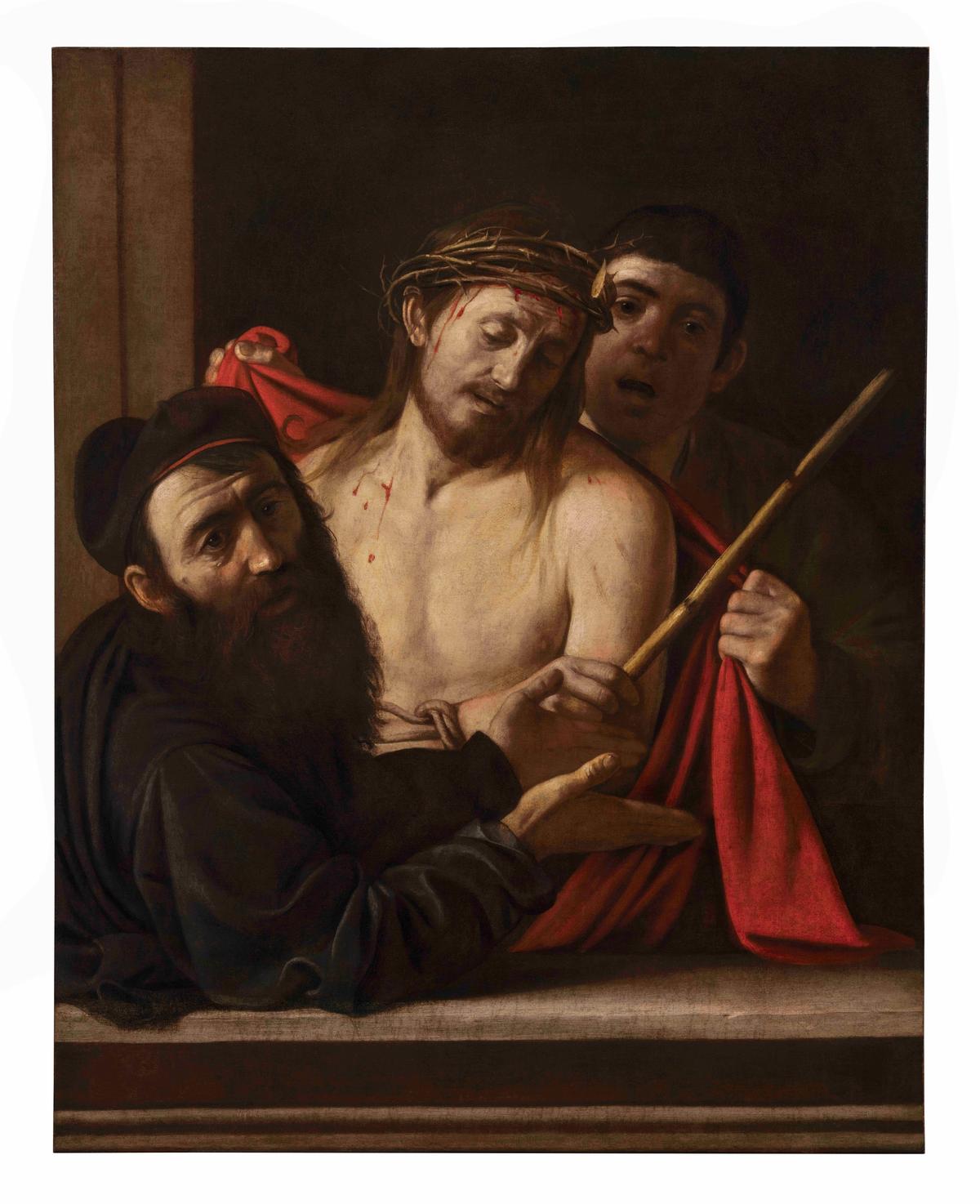A work believed to have been painted by the 16th-century artist Caravaggio will go on show at the Prado in Madrid later this month. The painting, known as Ecce Homo (around 1605-09), was withdrawn from an auction in Madrid in 2021 after officials at the Prado said there was “sufficient stylistic and documentary evidence” to suggest it could be an original Caravaggio. The London- and New York-based commercial gallery Colnaghi subsequently oversaw the authentication and extensive restoration of the work.
Ecce Homo, which shows Jesus in a crown of thorns before his crucifixion, will go on show at the Madrid museum from 28 May until October. “Since the Prado Museum alerted Spain’s Ministry of Culture of the relevance of the painting when it re-emerged at Ansorena auction house in April 2021… the work has been under the custodianship of the art gallery Colnaghi, in collaboration with Filippo Benappi (Benappi Fine Art) and Andrea Lullo (Lullo Pampoulides),” says a press statement. The painting’s new owner, whose identity is undisclosed, will loan the piece to the Prado.
Other scholars supporting the new attribution include Maria Cristina Terzaghi, an associate professor in history of Modern art at University Roma Tre, and Giuseppe Porzio, an art history professor at the University of Naples. Terzaghi says in a statement: “The speed of consensus around the work being a Caravaggio upon its rediscovery was absolutely unprecedented in the critical history of the painter [about whom] scholars have rarely agreed, at least in the last 40 years.”
The painting was due to go under the hammer at Ansorena auction house with a guide price of just €1,500. The small-scale painting was included in the online catalogue with an attribution to the “circle of [the 17th-century Spanish artist] José de Ribera”. The Spanish government subsequently imposed an export ban on the work while the Comunidad de Madrid regional government granted it protected status, declaring it an item of cultural interest. Experts from the regional government led the restoration along with the specialist Andrea Cipriani while the nuclear engineer Claudio Falcucci carried out a diagnostic investigation on the piece.
The work was previously owned by the three children of Antonio Pérez de Castro, founder of Madrid’s IADE design school, and the artist Mercedes Méndez Attard. The painting’s provenance is documented in detail by the Prado and Colnaghi: Ecce Homo is thought to have been included in the private collection of Philip IV of Spain in 1664, and is later mentioned as being on display in the apartment of his son, Charles II, from 1701 until 1702.
In 1789 Ecce Homo was exhibited at the Real Casa del Palacio del Buen Retiro in Madrid. In 1816, the piece is documented in the collection of Manuel Godoy, the Spanish secretary of state to Charles IV. It was then bequeathed to the Real Academia de San Fernando.
“In 1821, Evaristo Pérez de Castro Méndez, the Spanish diplomat and honorary member of the Academia de San Fernando, received the Caravaggio in exchange for other paintings gifted to the fine arts academy. It has remained with the family until it changed ownership in 2024,” adds the press statement.
Caravaggio, labelled the “bad boy” of Baroque art, continues to capture the public’s imagination. His dark and violent works punctuate the Netflix series Ripley while his final known painting is drawing crowds at the National Gallery in London (The Last Caravaggio, until 21 July).


